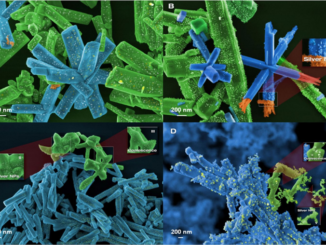
Theoretical and Experimental Investigation of 2D Hematite
Abstract: Novel two-dimensional non-van der Waals materials have been reported, boosting efforts to probe their properties and identify key applications. In this work, we report the synthesis, by means of a novel route via sonication of synthetic hematite, and characterization by transmission electron and atomic force microscopy of samples composed of two-dimensional hematite ([001]-cut layered alpha-Fe2O3). Microscopy images show a layered material with a handful of possible crystalline orientations, of which the [001] is the most abundant, presenting thickness of up to approximately 100 nm. Next, we employed first-principles calculations to study their structural stability and evaluate their thickness distribution. The stability of single, double, and triple layered structures is confirmed by phonon spectra and the formation energy is obtained, pointing out to the possibility of few layers, freestanding, stable samples. Further statistical modeling suggests that even though such thin samples are stable, their abundance is very small in comparison to thicker layers. We show that the antiferromagnetic ordering of the bulk phase is preserved in the nanostructured material, from the double-layered sample onward; however, a nonzero magnetization arises due to distinct localized moments in surface Fe atoms. Finally, our calculated band structures present narrower gaps in the layered structures in comparison to the bulk, and a charge-trapping acceptor level is identified at the surface Fe atoms.
Author(s): Padilha, ACM; Soares, M; Leite, ER; Fazzio, A
JOURNAL OF PHYSICAL CHEMISTRY C
Volume: 123 Pages: 16359-16365 Published: JUL 4 2019
PDF: Theoretical and Experimental Investigation of 2D Hematite
DOI: 10.1021/acs.jpcc.9b01046




